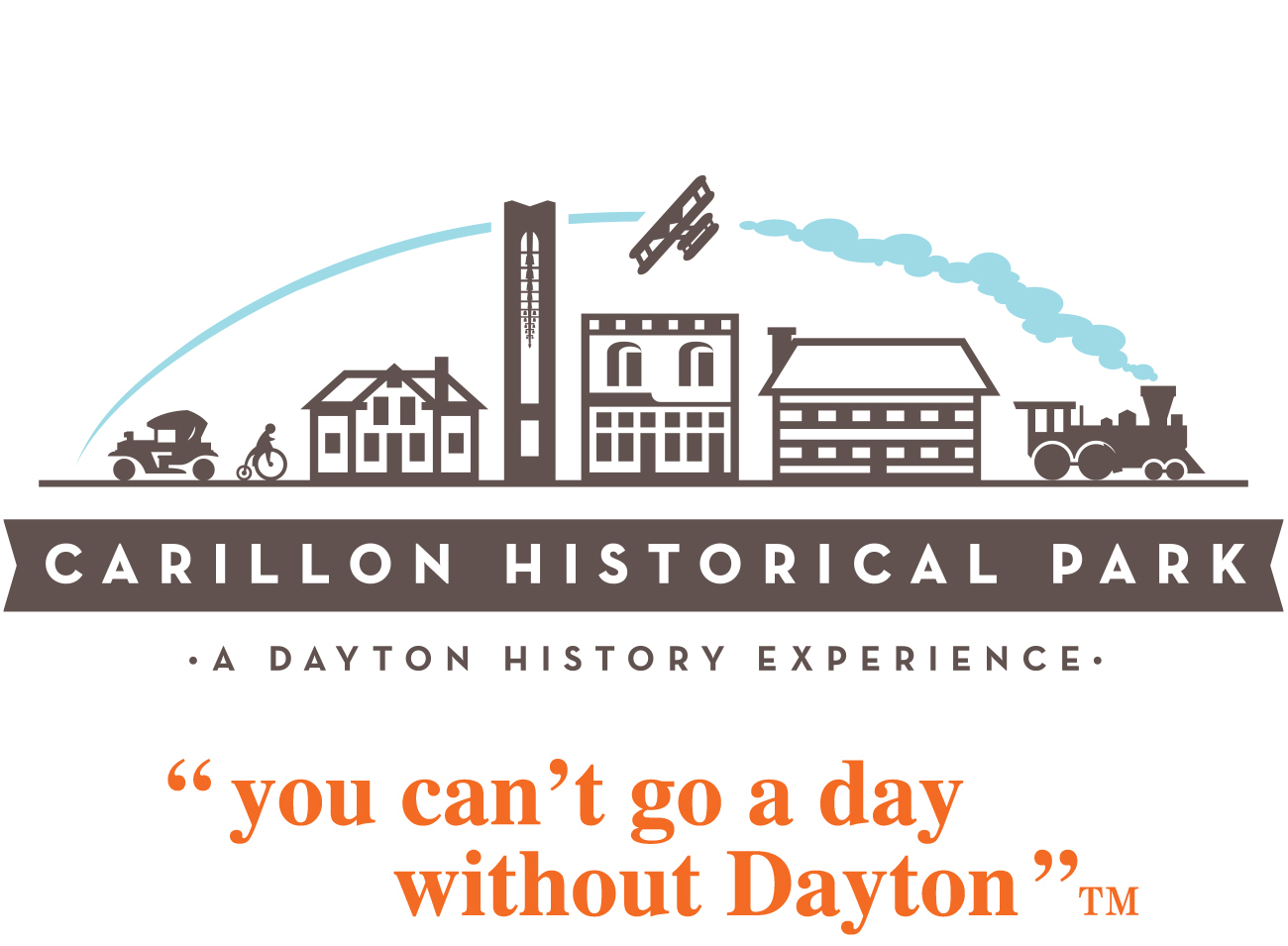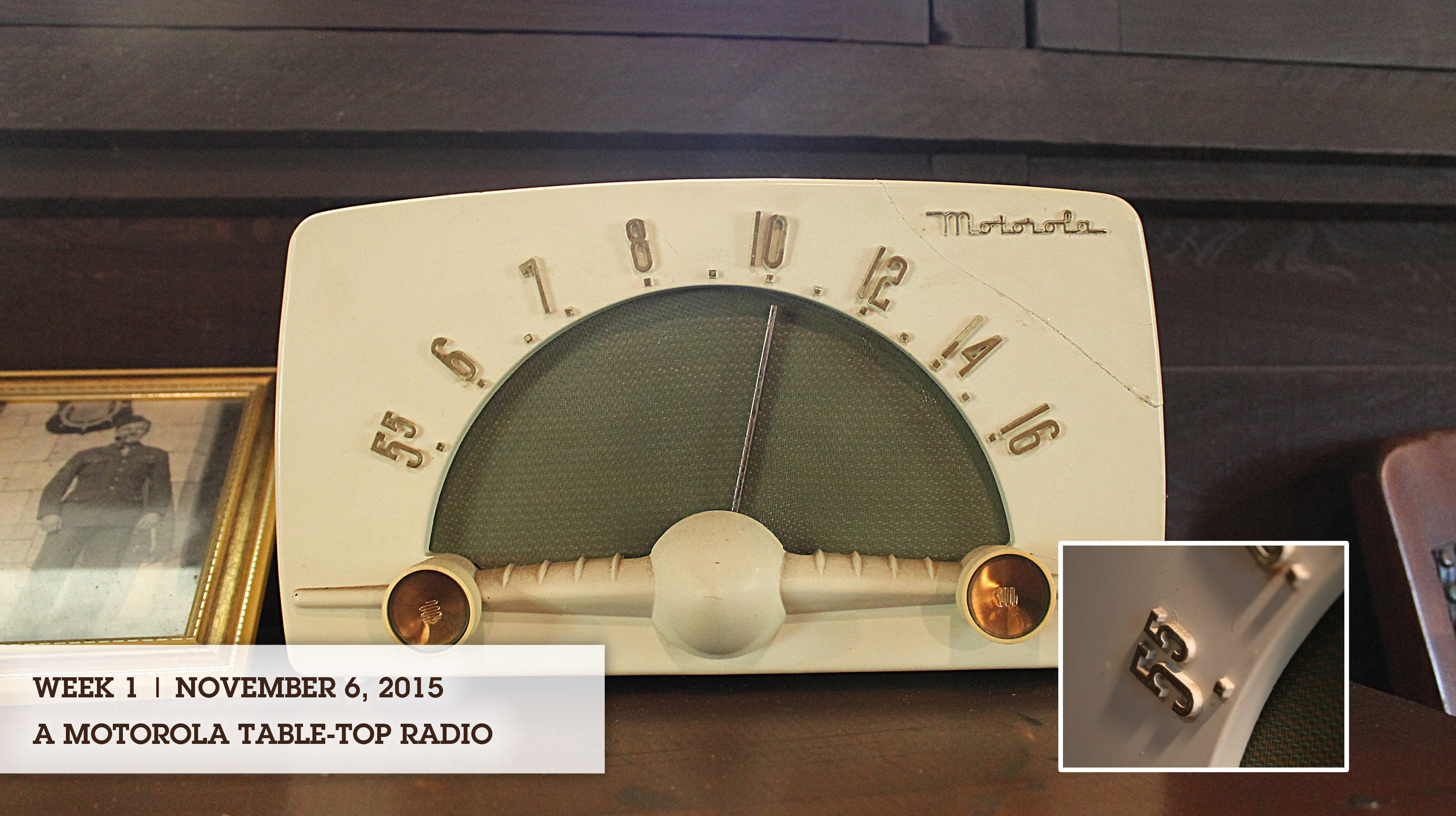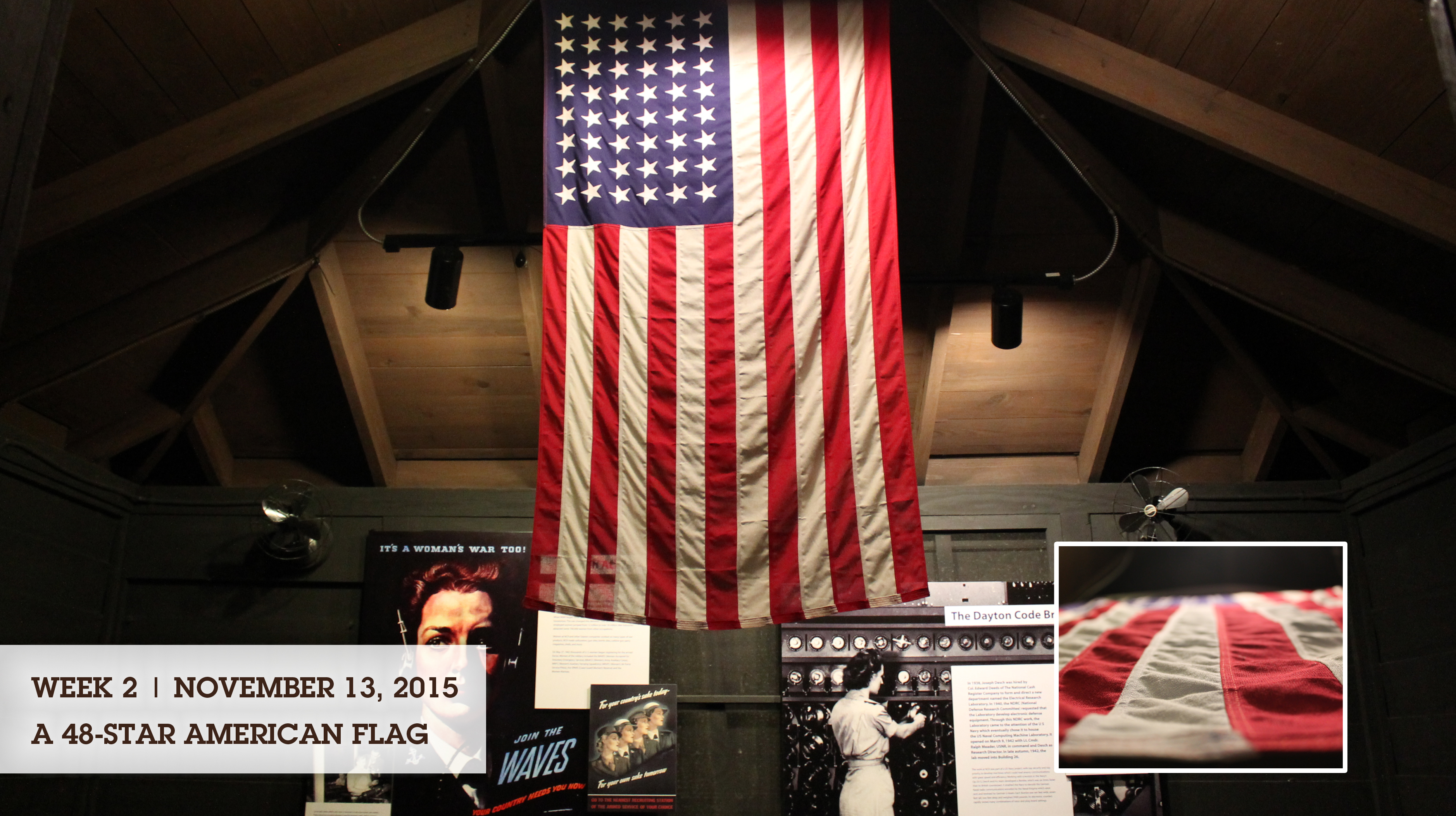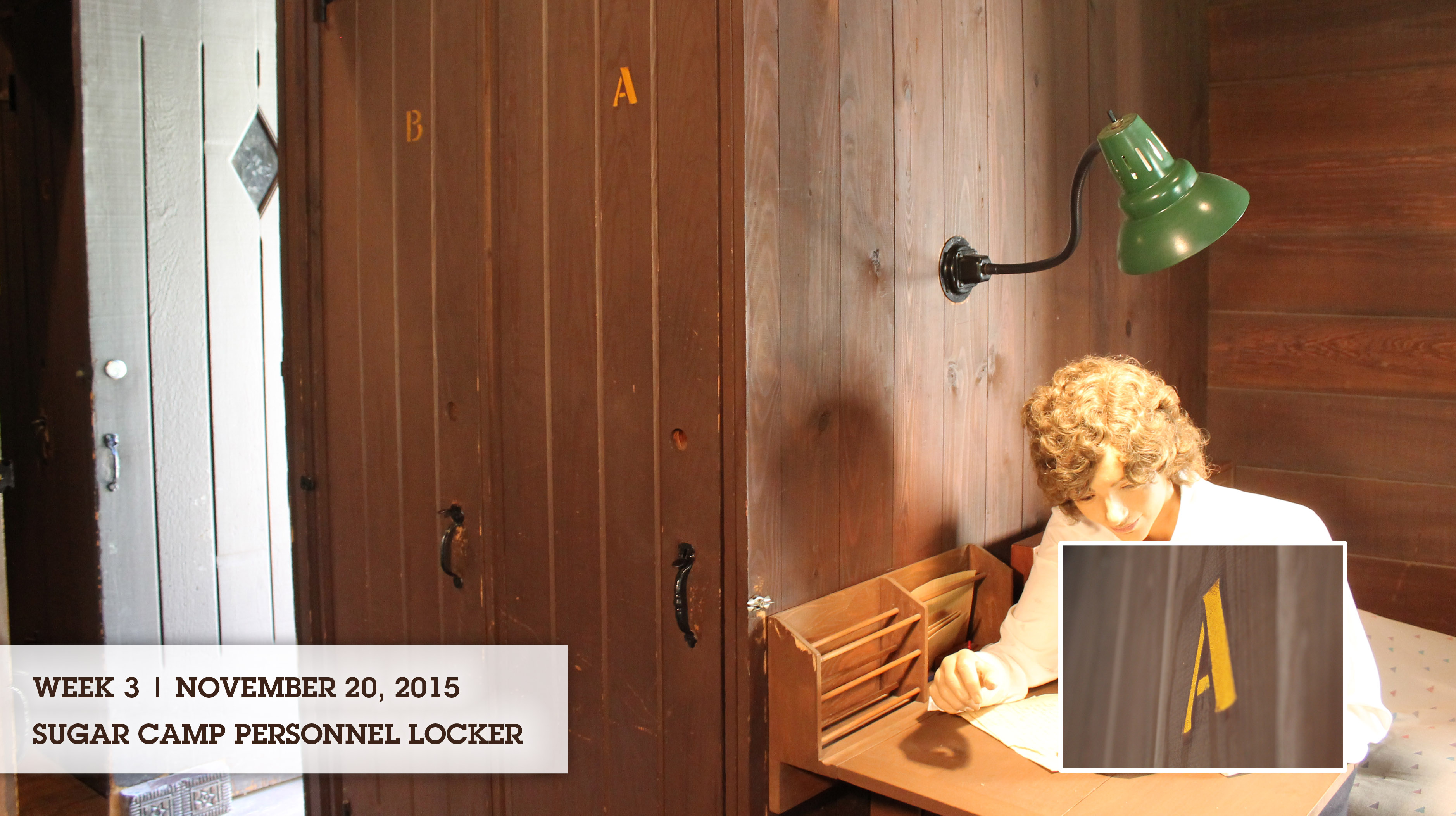November Mystery at the Museum Solved…
The answers to November’s series of Museum Mysteries are (in weekly order): a Motorola table top radio, the American flag, and a Sugar Camp cabin personnel locker. All of this month’s mystery artifacts, and many others, are on display in the Sugar Camp/WAVES Cabin #22 at Carillon Historical Park! For a sneak peek at next week’s Mystery at the Museum artifact photo, be sure to pick up a FREE copy of the Dayton City Paper next Tuesday!
Week 1 | Motorola Table Top Radio
The Galvin Manufacturing Corporation of Chicago, Illinois was founded in 1928, with only 5 employees, to manufacture battery eliminators. The company quickly developed radios for automobiles, mad car radio receivers for police use, and also radios for use by the general public for entertainment purposes. During World War II, the company developed the Handie-Talkie SCR536 AM portable two-way radio, used by U.S. soldiers on battlefields across the globe. In 1947, the company officially changed its name to Motorola, Inc. and quickly expanded its product line to include cutting-edge technological devices known as television sets. On display in the Sugar Camp/WAVES Cabin #22 at Carillon Historical Park is a Bakelite Motorola radio, which is similar in style to radios the Dayton-stationed WAVES may have listened to while at Sugar Camp.
Week 2 | American Flag
On June 14, 1777, the Continental Congress officially adopted the United States flag with a resolution stating: “that the flag of the United States be thirteen stripes, alternate red and white; that the union be thirteen stars, white in a blue field, representing a new constellation.” From that point forward, as new states were added to the union, additional stars and stripes were added to the flag until 1818, when it was determined that the flag should revert back to the original thirteen stripes with only new stars being added in order to represent the newest states. The 48-star flag, in use from 1912 to 1959, is the second longest-used U.S. flag in history, behind only the current 50-star version. An original 48-star flag is on display for visitors touring the Sugar Camp/WAVES Cabin #22 at Carillon Historical Park.
Week 3 | Sugar Camp Personnel Locker
Once used to house NCR salesmen during training schools; the group of sixty cabins located at Sugar Camp became the perfect location for housing specialized units during World War II. These specialized units, known as Women Accepted for Volunteer Emergency Service (WAVES), worked for the military at NCR on a top secret project to build the code breaking machine, the Bombe. These machines, nearly 10 feet wide, 7 feet tall and two feet deep, enabled the U.S. Navy to decode German Naval radio communications. At the height of the program, over 600 WAVES were stationed in Dayton. There were times when as many as 12 women living in a single cabin at Sugar Camp. There would be three women assigned to a single bed: one would work, one would sleep and one would be enjoying free time. The wooden lockers would have been shared by the occupants as well. These lockers can be seen while touring the Sugar Camp/WAVES Cabin #22 at Carillon Historical Park.
To see other historical images from our collection, search our Digital Photo Archive.








